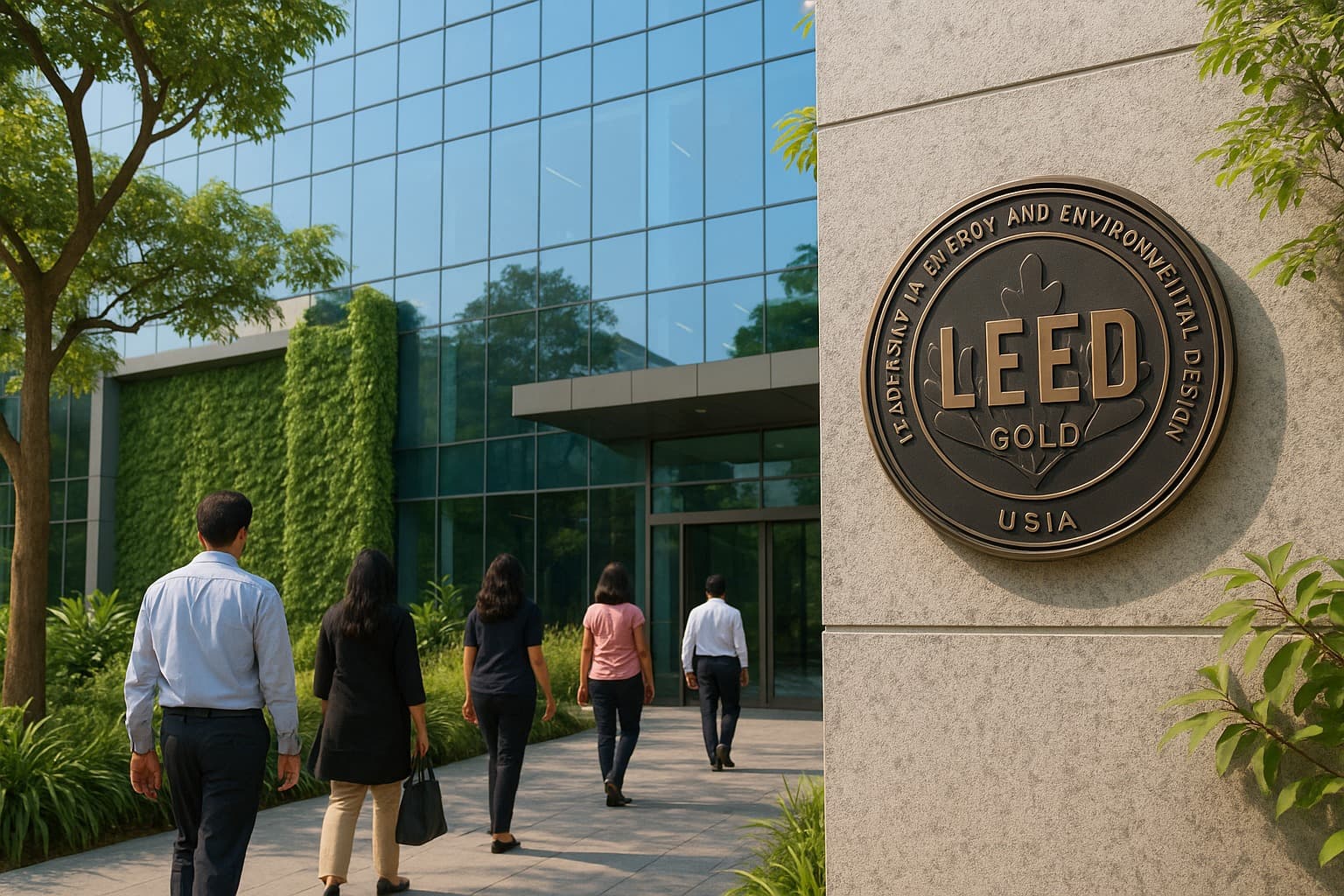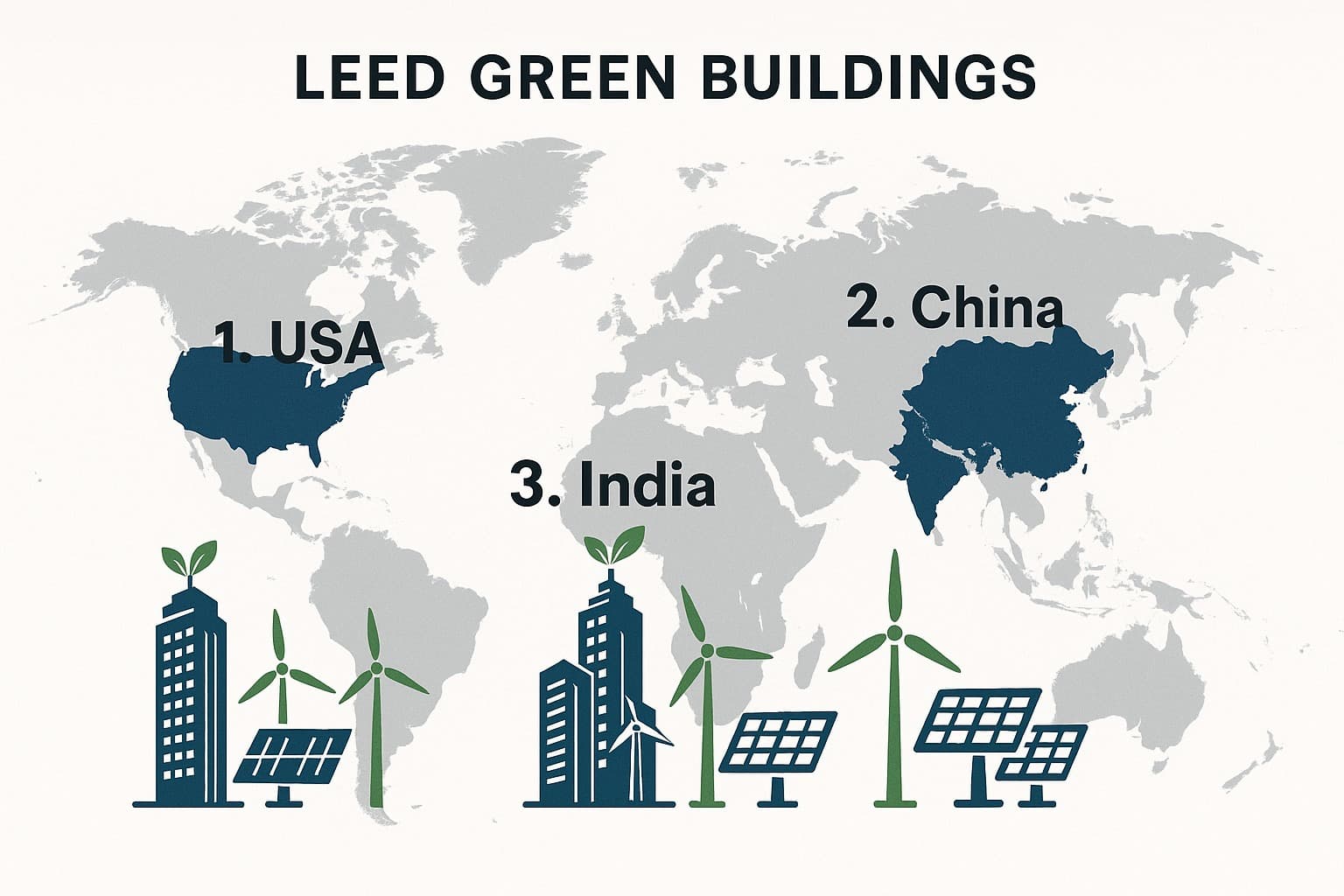India Ranks 3rd Globally in LEED Green Buildings: A Sustainable Real Estate Revolution
Summary
India ranks 3rd globally in LEED green buildings, showcasing a commitment to sustainable real estate. This achievement reflects rising awareness, supportive policies, and technological innovation, creating healthier and more eco-friendly spaces.

In today’s fast-changing world, where climate change and environmental concerns dominate global conversations, India is quietly but powerfully making its mark. The country has emerged as a global leader in sustainable construction, earning the impressive position of third in the world for LEED-certified green buildings. This achievement isn’t just about numbers; it reflects a collective shift in mindset—a conscious effort to build spaces that care for both people and the planet.
The Rise of Green Buildings in India
Green buildings India are no longer a niche concept limited to luxury projects. They have become a symbol of modern, responsible development. From residential complexes to office spaces, eco-friendly architecture is redefining the urban landscape. These buildings are designed to minimize environmental impact while enhancing the quality of life for their occupants.
LEED certification, the global standard for sustainable construction, has been a driving force behind this transformation. It ensures that buildings meet rigorous energy, water, and material efficiency standards. Today, India ranks 3rd in global green buildings, following only the United States and China—a remarkable achievement for a developing nation with a rapidly urbanizing population.
What LEED Certification Means for India
LEED certification is more than a label; it is a philosophy that emphasizes thoughtful, sustainable design. Every LEED-certified project in India integrates energy-efficient lighting, smart HVAC systems, water recycling, and eco-friendly materials. The result is reduced operational costs, a smaller carbon footprint, and healthier spaces for people.

LEED certified buildings in India are also breaking the stereotype that sustainable construction is only for high-end projects. Mid-segment residential and commercial developments are increasingly adopting these standards, making eco-friendly buildings accessible to a wider population. The LEED green building certification impact on Indian real estate is profound: higher property values, lower utility costs, and improved tenant satisfaction.
Why India Leads in Green Construction
Several factors explain why India has become a global leader in sustainable construction. Government initiatives have been pivotal. Policies like the Energy Conservation Building Code (ECBC) provide clear guidelines, while tax benefits and faster approvals for green buildings encourage developers to adopt eco-friendly practices.
Equally important is the rising awareness among buyers. Today’s homebuyers and businesses want spaces that reflect their values—healthy, environmentally conscious, and cost-efficient. Green real estate projects in India are selling faster because people see the long-term benefits, from lower energy bills to a healthier indoor environment.
Technological innovation also plays a crucial role. Advanced solar systems, smart energy management, and rainwater harvesting solutions are enabling developers to build eco-friendly projects that are both sustainable and technologically advanced. This combination of policy, awareness, and innovation is why India is considered a global leader in green construction projects.
The Human Impact of Sustainable Buildings
Numbers tell one story, but the real impact of green buildings is deeply human. Imagine a child growing up in a home with cleaner air and natural lighting, or an office worker thriving in a space designed to reduce stress and boost productivity. Green buildings improve everyday life, proving that sustainability isn’t just about the planet—it’s about people.

The growth of eco-friendly and sustainable buildings in India is inspiring. With over 1,900 LEED-certified projects covering more than 150 million square feet, urban centers like Mumbai, Bengaluru, Delhi NCR, and Pune are leading the charge. These buildings are transforming city skylines while promoting a culture of responsibility and care for the environment.
The Future of Green Real Estate in India
As urbanization accelerates, the importance of sustainable real estate will only grow. Experts predict that green building adoption will increase significantly in the coming decade, making eco-friendly living the norm rather than the exception. India ranks 3rd globally for LEED-certified green buildings, and this achievement sets a benchmark for other developing nations.
Beyond environmental benefits, green buildings in India tell a story of hope, vision, and human care. They remind us that economic growth and sustainability can go hand in hand. Every eco-friendly home, office, and commercial space is a step toward a greener, healthier future—one that prioritizes both people and the planet.
Conclusion: Building a Sustainable Tomorrow
The story of green buildings in India is both practical and emotional. It’s about conserving resources, reducing carbon footprints, and meeting global climate goals. But it’s also about creating spaces where people can thrive—where children can breathe cleaner air and workers can feel inspired.
India’s achievements in LEED green building certification reflect a deep, human desire to build responsibly—not just for today, but for generations to come. This journey shows that real estate can be more than concrete and glass; it can be a force for positive change, shaping healthier communities and more sustainable cities.
For those invested in real estate, sustainability, or conscious living, India’s rise in green construction is a story worth celebrating—a reminder that every building can be a step toward a better, greener tomorrow.
